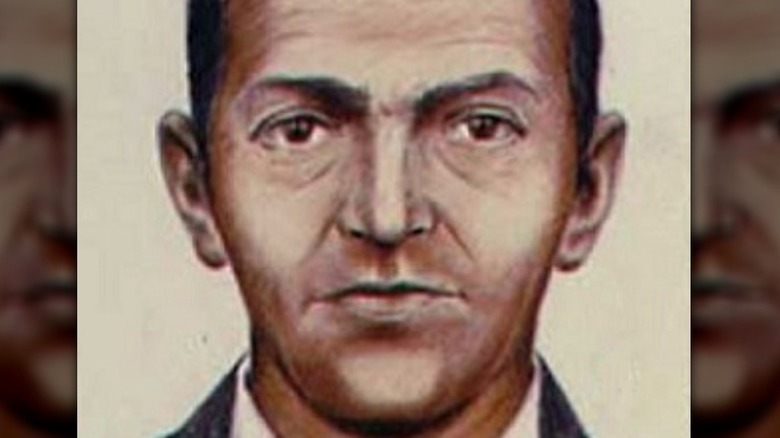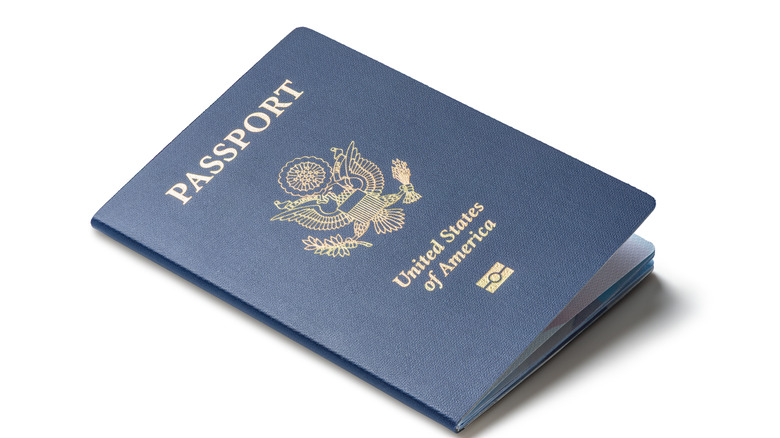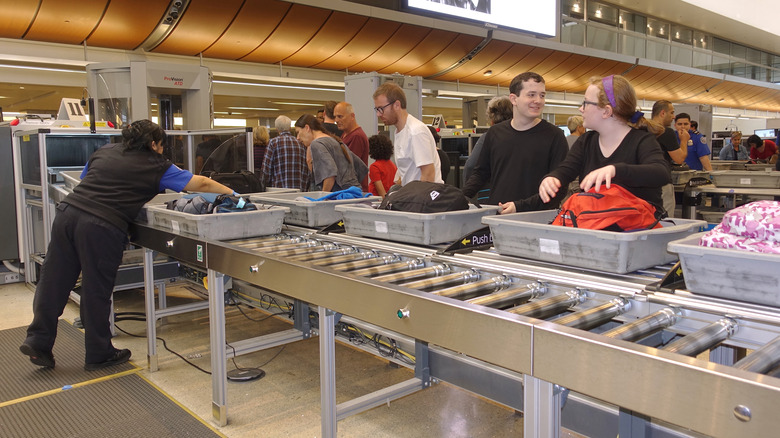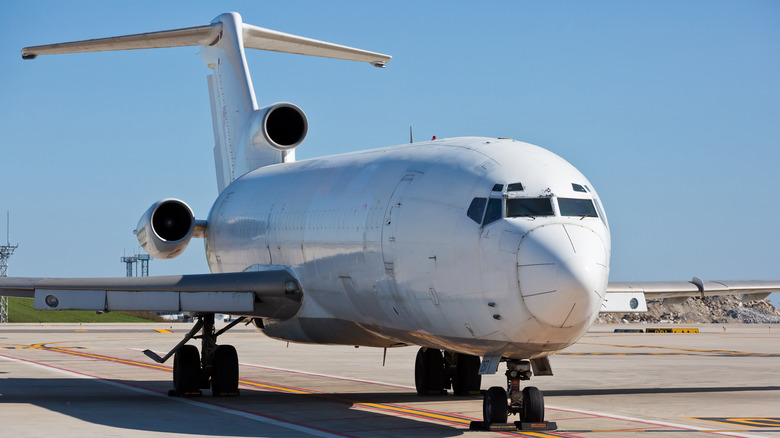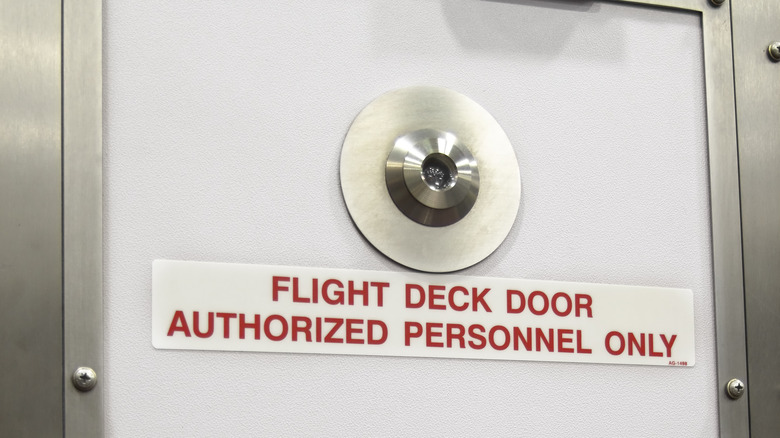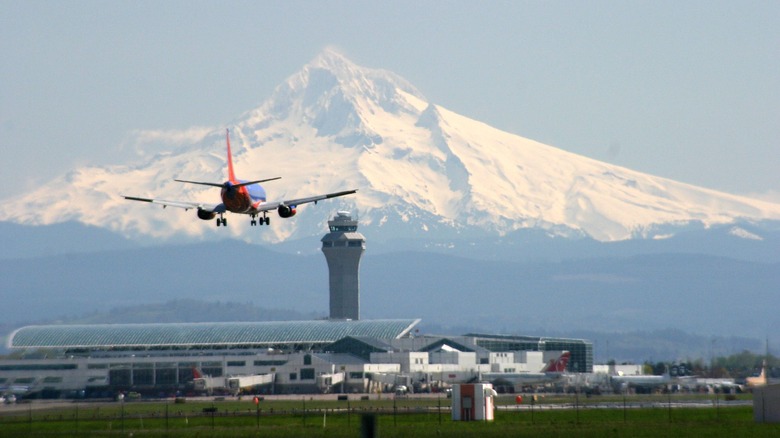How D.B. Cooper Forever Changed Airline Travel
Some travelers today may have memories of a very different experience getting to their destinations just a few decades ago, especially when it comes to airline travel. Today a person can expect multiple lines to wait in, security checkpoints, and regulations regarding what they can or cannot bring on a plane. There are even certain requirements regarding how much of specific substances can be brought on board.
Yes, airline travel was quite a romanticized affair at one point, and the lax rules definitely added to the appeal. Traveling by plane was glamorous. Even Frank Sinatra released an album, "Come Fly With Me," themed around it in 1958. It remained the best-selling album in the United States for five weeks, according to The Atlantic. Unfortunately, the glitz and glam often associated with airline travel came to a halt over the next few decades after a multitude of incidents involving safety and national security.
There are a few events that remain at the forefront of many people's minds for a variety of reasons. In the case of the D.B. Cooper skyjacking in 1971, the uniqueness and unlikeliness of the events that took place at the time of and after the crime occurred are the main factors in its popularity.
Cooper boarded a commercial flight with no real identification
On November 24, 1971, the day before Thanksgiving, a yet-to-be-known D.B. Cooper went to the Portland, Oregon airport and purchased a ticket to Seattle, Washington, from the Northwest Orient Airlines desk, for $20. Once aboard the flight, Cooper passed a note to the flight attendant, Florence Schaffner, informing her that he was carrying a bomb and demanded $200,000 dollars in $20 bills — $1.3 million in today's money — and four parachutes, according to an article published in Nine News. Cooper showed the attendant what she believed to be a bomb, and she informed the plane's captain of the situation.
Today, Cooper would have already been identified. However, when he purchased his plane ticket to Seattle, he gave the name Dan Cooper, and that was enough, according to Esquire. Fast-forward to modern-day air travel, and the word of a passenger alone would never be enough for proper identification. Now you need a form of valid government-issued ID stating exactly who you are so that it can be entered into flight records for safety and security purposes.
Today Cooper's briefcase would have never made it past TSA
The infamous D.B. Cooper hijacked a Boeing 727 aircraft after informing the flight attendant that he had a bomb and would blow up the craft if his demands weren't met. A terrifying situation and one that would be nearly impossible to pull off today. According to Nine News, Cooper had the bomb, or bomb-like equipment, with him, tucked inside a briefcase that he carried on the flight.
Cooper keeping the bomb threat hidden inside a briefcase seems like something out of an old James Bond movie in which Cooper plays the villain, but today he wouldn't have even made it on the plane. Cooper's skyjacking, along with other flight-safety incidents, has led to strict TSA checks prior to passengers getting even remotely close to their gate to board a plane. There are lines that everyone must wait in to have everything they plan to bring on board, from purses to shoes, carefully examined. Nowadays, the TSA checks around 4.9 million carry-on bags daily for anything that looks even mildly questionable, according to the TSA website. Between x-ray machines and routine bag checks, Cooper's suspicious and threatening bag would have been flagged immediately, and harsh action taken against him, thus stopping his entire air-piracy stunt.
Precautions were put in place to avoid more mid-air jumps
After landing the plane in Tacoma, Washington, Cooper's demands were met, and most of the people on the flight were allowed to leave. He then ordered the pilot to fly him to Mexico City. However, when he was informed that there wouldn't be enough fuel, Cooper agreed to refuel the plane in Reno, Nevada, according to Esquire. After take-off, the situation changed drastically. Before the plane even had the chance to leave the Pacific Northwest, Cooper lowered the rear stairwell of the craft and jumped out, taking with him the cash, the parachutes, and the handwritten note he had initially given to the flight attendant.
While the idea of Cooper's jump might impress some, it was extremely risky, and whether or not he actually survived his nighttime skydive into the wilderness of the Pacific Northwest remains a mystery to this day. His ability to even attempt the jump in the first place put authorities on high alert, and changes were implemented. His stunt led the Federal Aviation Administration to install "Cooper Vanes" into each Boeing 727 aircraft (per History). The Cooper Vane is a latch attached to any Boeing 727 with a rear stairwell and prevents passengers, or anyone else, from opening and lowering the stairwell mid-flight. So there's no skydiving out the back of a commercial plane in this day and age.
The pilots were unable to describe Cooper because they never saw him
Because of his lack of actual identification when purchasing his ticket, very few people were able to give a description of Cooper. One of them was flight attendant Florence Schaffner, who provided a good enough description for authorities to come up with a sketch of what he might have looked like at the time of the hijacking. While the drawing remains a large part of the case, when it comes to D.B. Cooper, it may be possible that had more people seen his face, he would have had a higher likelihood of being identified.
The pilots on the plane that evening had no way of seeing Cooper, and this realization hit hard after the incident. Following the events, peepholes in the cockpit doors became standard in planes, according to Nine News. This means that if for whatever reason, the pilots are unable to leave the cockpit and see someone, they can look at them discreetly via peephole.
D.B. Cooper's case remains a mystery, but his impact on flying is permanent
D.B. Cooper embarked on a flight starting at the Portland, Oregon airport the eve before one of the busiest national holidays in the United States and changed air travel forever. His actions had a direct impact on the security measures regarding both boarding a plane and the planes themselves. The actual identity of Cooper has never been discovered. Some consider him a criminal mastermind who got away with the perfect crime, while others say he was reckless and couldn't have survived the jump. According to an investigator, Mark S. Zaid, in a podcast with Legal Talk Network, there's a possibility that a renewed indictment against Cooper has kept him within the Statute of Limitations.
Cooper's hijacking is only one of many airline incidents that have led to safety threats or tragedy. All of them have encouraged airline officials to tighten security and step up their ability to see potential flaws in both the process of traveling and the equipment involved. Whether he got away with it or not, what happened that Thanksgiving Eve in 1971 is something that would be nearly impossible for anyone to pull off today.
On July 13, Netflix streams the documentary "D.B. Cooper: Where Are You?!" The trailer is posted on YouTube.
